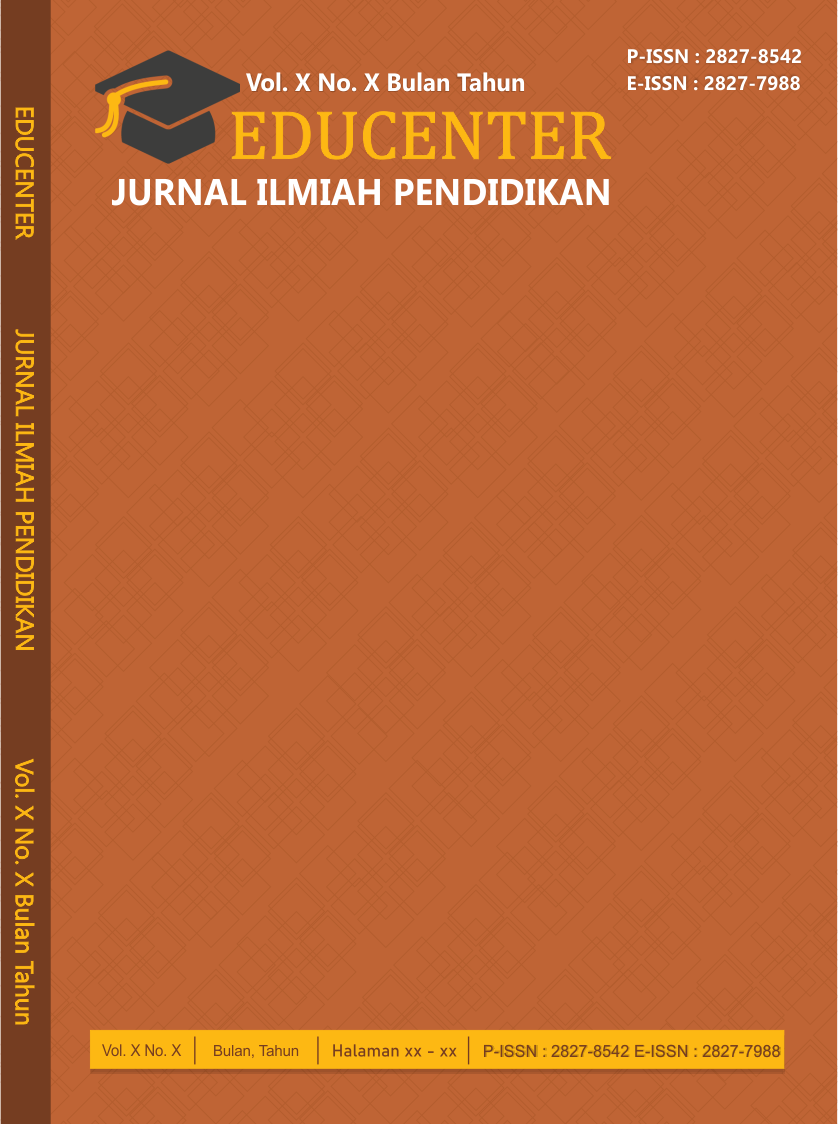Effectiveness of hybrid learning model assisted by google classroom on writing negotiation text in class X RPL SMK Negeri 6 Konawe
Main Article Content
Abstract
The increasing integration of technology in education highlights the need for effective learning models that enhance student engagement and learning outcomes. This study examines the effectiveness of implementing a hybrid learning model assisted by Google Classroom in improving students' learning motivation and negotiation text writing skills. Using a pre-experimental research approach with a one-group pretest-posttest design, the study involved 20 grade X students majoring in software engineering at SMK Negeri 6 Konawe. Data were collected through surveys and writing skills assessments. The findings indicate that hybrid learning with Google Classroom positively impacted students' motivation and writing proficiency, providing a more flexible and cost-effective learning experience. However, challenges such as limited internet access and reduced student interaction during online sessions were identified. The study contributes to the ongoing discussion on hybrid learning by demonstrating its potential benefits in language education while also highlighting areas for improvement. These findings suggest that schools and parents should provide additional support, particularly in enhancing internet accessibility, to maximize the effectiveness of hybrid learning.
Article Details
Section

This work is licensed under a Creative Commons Attribution-NonCommercial 4.0 International License.
How to Cite
References
Abazi-Bexheti, L., Kadriu, A., Jajaga, E., Apostolova-Trpkovska, M., & Abazi-Alili, H. (2018). LMS solution: Evidence of Google Classroom usage in higher education. Business Systems Research: International Journal of the Society for Advancing Innovation and Research in Economy, 9(1), 31–43. https://hrcak.srce.hr/ojs/index.php/bsr/article/view/12612
Afista, Y., & Hosna, R. (2022). Pengaruh penggunaan model hybrid learning terhadap peningkatan hasil belajar siswa pada mata pelajaran fiqih di MTsN 9 Madiun. Jurnal Education and Development, 10(3), 209–215. https://doi.org/10.37081/ed.v10i3.3826
Asgari, S., Trajkovic, J., Rahmani, M., Zhang, W., Lo, R. C., & Sciortino, A. (2021). An observational study of engineering online education during the COVID-19 pandemic. PLOS ONE, 16(4), e0250041. https://doi.org/10.1371/journal.pone.0250041
Febriani, A., & M Fauzi, A. (2021). Efektivitas kebijakan daring bagi pendidikan konseling dalam meningkatkan mutu peserta didik di SMAN 1 Mejayan. Suluh: Jurnal Bimbingan Dan Konseling, 6(2), 1–10. https://doi.org/10.33084/suluh.v6i2.2461
Hafez, O. F., Nosseir, A., McKee, G. T., & El-Seoud, S. A. (2023). The features of students paying and not paying attention in online classes. 2023 International Conference on Computer and Applications (ICCA), 1–7. https://doi.org/10.1109/ICCA59364.2023.10401506
Hakim, M., & Mulyapradana, A. (2020). Pengaruh penggunaan media daring dan motivasi belajar terhadap kepuasan mahasiswa pada saat pandemik Covid-19. Widya Cipta: Jurnal Sekretari Dan Manajemen, 4(2), 154–160. https://doi.org/10.31294/widyacipta.v4i2.8853
Harun, A., Asiah, N., Kuswanto, C. W., Iqbal, A., & Diadara, N. (2021). Pengaruh model pembelajaran hybrid learning terhadap hasil belajar pendidikan agama islam. Al-Tadzkiyyah: Jurnal Pendidikan Islam, 12(2), 349–359. https://doi.org/10.24042/atjpi.v12i2.11221
Huda, M. (2013). Model-model pengajaran dan pembelajaran: Isu-isu metodis dan paradigmatis. Pustaka Pelajar.
Husamah, H. (2014). Pembelajaran bauran (Blended learning). Prestasi Pustaka Publisher.
Iswanto, R. (2017). Pembelajaran Bahasa Arab dengan pemanfaatan teknologi. Arabiyatuna : Jurnal Bahasa Arab, 1(2), 139–152. https://doi.org/10.29240/jba.v1i2.286
Jusoff, K., & Khodabandelou, R. (2009). Preliminary study on the role of social presence in blended learning environment in higher education. International Education Studies, 2(4), 79–83. https://eric.ed.gov/?id=EJ1065767
Ketut Sudarsana, I., Bagus Made Anggara Putra, I., Nyoman Temon Astawa, I., & Wayan Lali Yogantara, I. (2019). The use of Google classroom in the learning process. Journal of Physics: Conference Series, 1175, 012165. https://doi.org/10.1088/1742-6596/1175/1/012165
Lake, R., & Makori, A. (2020). The digital divide among students during COVID-19: Who has access? Who doesn’t. In The Lens. The Lens. https://www.crpe.org/thelens/digital-divide-among-students-during-covid-19-who-has-access-who-doesnt.
Mustakim, M. (2020). Efektivitas pembelajaran daring menggunakan media online selama pandemi covid-19 pada mata pelajaran matematika. Al Asma : Journal of Islamic Education, 2(1), 1–12. https://doi.org/10.24252/asma.v2i1.13646
Shibley, I., Amaral, K. E., Shank, J. D., & Shibley, L. R. (2011). Designing a blended course: Using ADDIE to guide instructional design. Journal of College Science Teaching, 40(6), 80–85. https://eric.ed.gov/?id=EJ963648
Sudarsana, I. K. (2020). Pembelajaran dalam jaringan dan upaya memutus pandemi Covid-19. In Covid-19 Perspektif Pendidikan (pp. 1–10). Penerbit Yayasan Kita Menulis.
Sulthoniyah, I., Afianah, V. N., Afifah, K. R., & Lailiyah, S. (2022). Efektivitas model hybrid learning dan blended learning terhadap motivasi belajar siswa sekolah dasar. Jurnal Basicedu, 6(2), 2466–2476. https://doi.org/10.31004/basicedu.v6i2.2379
Syafari, Y., & Montessori, M. (2021). Analisis pembelajaran daring terhadap motivasi belajar dan prestasi belajar siswa dimasa pandemi Covid-19. Jurnal Basicedu, 5(3), 1294–1303. https://doi.org/10.31004/basicedu.v5i3.872
Uno, H. B. (2008). Teori motivasi dan pengukurannya. Bumi Aksara.
Verawati, V., & Desprayoga, D. (2019). Solusi pembelajaran 4.0: hybrid learning. Prosiding Seminar Nasional Program Pascasarjana Universitas Pgri Palembang. https://jurnal.univpgri-palembang.ac.id/index.php/Prosidingpps/article/view/2739
Wahyuni, A. S. (2021). Penerapan model hybrid learning dalam PTM terbatas untuk meningkatkan motivasi dan hasil belajar siswa. Indonesian Journal of Educational Development (IJED), 2(3), 472–481. https://doi.org/10.5281/zenodo.5681376

